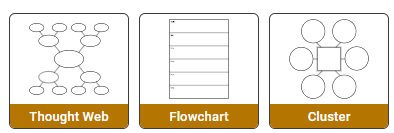Diving into Digital Projects
Use creative digital projects to engage students in the curriculum and develop content mastery.

As an elementary technology specialist, it can be a challenge to find ways to get students excited about classroom content. Engaging them with technology can help, but introducing too much technology for technology's sake risks striking fear into the hearts of teachers who see technology as just one more thing to try to shoehorn into an already stuffed curriculum. Add the new Common Core standards to the mix, and the tension in classrooms becomes nearly palpable.
I needed to figure out how to spark teachers' interest in having students use digital tools, while simultaneously coaching them to be less fearful of new technologies. I found that tools like Pixie and Frames help both students and teachers dive into technology-infused creative projects that are aligned to our core curriculum.
My work with teachers typically begins with them dropping off their class in the computer lab for their once-weekly technology time. I work diligently to connect what students and I do in the lab to what goes on in the classroom by meeting with, and listening to, teachers during their planning and Professional Learning Community (PLC) time.
For example, if students are practicing graphing in math, we take an in-class survey and create a pictograph to represent the survey data. I ask student to compose a problem based on their graph. If another group of students are learning about animals, we can create an ABC book, with each student contributing a page containing reputable information pertaining to their animal, written from the point of view of the animal, and illustrations, images, and narration.
Instead of simply writing definitions of water cycle vocabulary words, students studying this topic can use the collaboration feature Pixie to work together to illustrate the words. This project is extended by using Frames to animate the water cycle.
Many of these projects are also displayed on our school website, either as individual work or class books. When we published their work online, students can share these projects with their families, often beaming with pride because they have become “real authors.”
The work students create and publish in the computer lab helps teachers realize how effectively creative technology projects can enhance student learning of the core curriculum. We are now at a point where our entire staff is comfortable with a variety of “sure-fire” projects that connect to the curriculum. These replicable, successful projects have made our learning community realize the power of producing, rather than just consuming, media.
Recently, I convinced one of our Kindergarten teachers to have her students rewrite “The Twelve Days of Christmas.” We have morning and afternoon sessions, so I used a coaching model for implementing this project I taught the morning class while the teacher observed, and she taught the afternoon class on her own as I observed nearby to provide a safety net. Each Kindergartner has a fourth-grade buddy to assist them, which helped immensely.
The kindergartners wrote, illustrated, and sang their contributions to the project. The fourth-grade “assistants” coached the younger students during the editing process, providing assistance verbally without ever touching the keyboard or mouse. Finally, all of the students joined together to sing their new version of the holiday song.
When the final product was published, the formerly reluctant teacher actually admitted that is wasn't “as horrible as she thought it would be” and that she would do it again. I consider that a success!
Performances and published versions of student projects began to attract the interest of other teachers. We used this interest as a springboard for a PLC in-service to introduce teachers to new technology. Many teachers become more comfortable with the technology by creating class newsletters. This new-found confidence helps them begin to see possibilities for connecting students to curriculum with creative digital tools.
I recently peeked into a lab full of first-grade students sitting in the dark, with the glow of blank Pixie canvases illuminating the papers they brought with them. Curious, I slipped quietly into the room and listened as the teacher instructed her students to begin by adding a page for each one of the directions they had written for their “How To” book.
I watched with delight as students began to write sentences, illustrate them, and finally add narration. It took all of my self-control to stop from running up to give the teacher a big hug. Instead, I whispered to her that I couldn't wait to see how the projects turned out and that I was always available if she needed any help.
As time goes by, my teachers realize that creative projects help students to become interested in the subject matter. Some teachers still need coaxing to introduce project work, but they are receptive to coaching. More and more often, though, teachers are diving in on their own!










